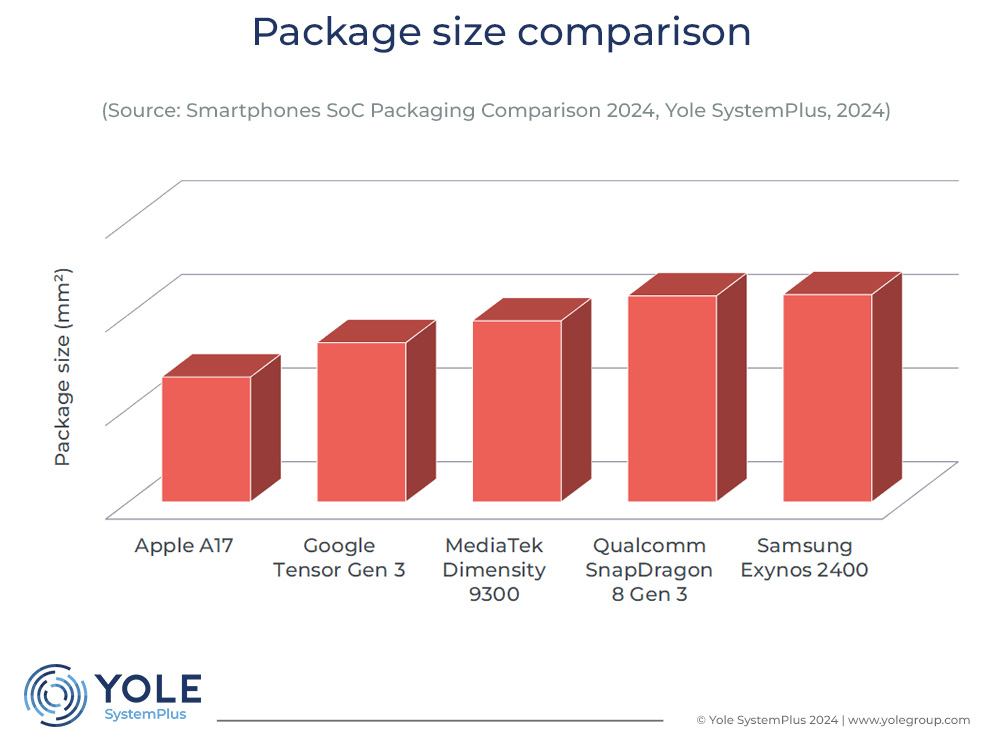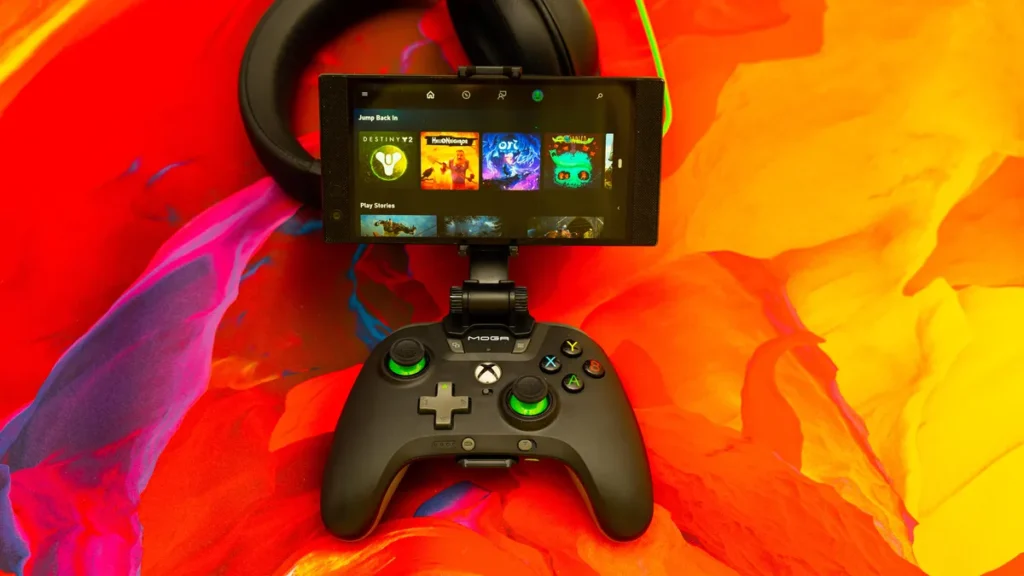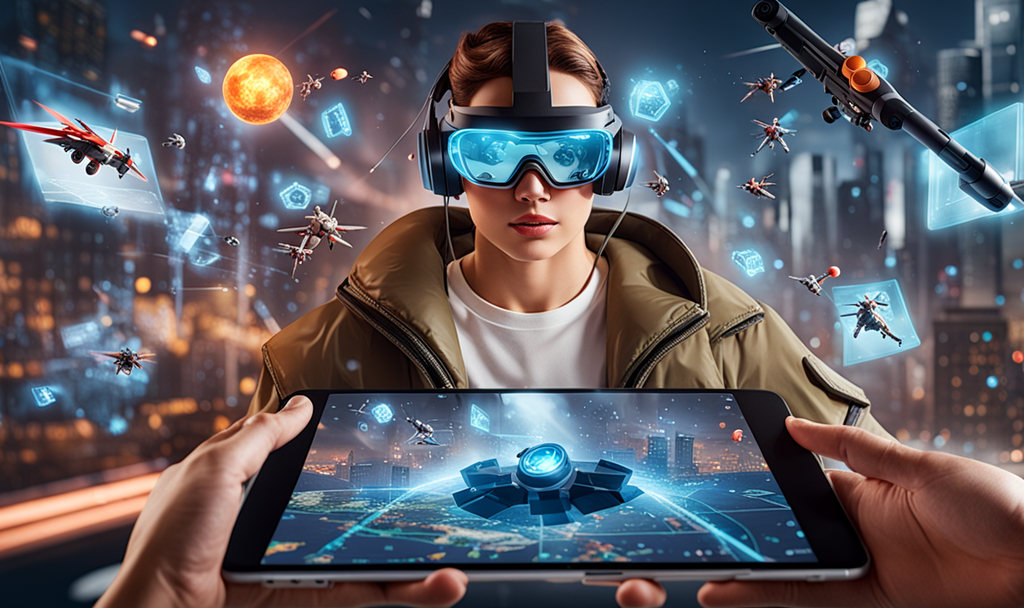
The mobile gaming revolution has fundamentally transformed the digital entertainment landscape, propelling smartphones from simple communication devices to sophisticated gaming platforms capable of delivering console-quality experiences. As of early 2025, the mobile gaming market continues its remarkable ascension, with industry analysts at Newzoo projecting global mobile gaming revenue to exceed $120 billion by the end of the year, representing nearly half of the entire gaming industry’s revenue.
This extraordinary growth stems from several converging technological advancements: increasingly powerful smartphone hardware, expanded 5G network coverage, and the development of sophisticated cloud gaming infrastructure. Together, these innovations have created an ecosystem where AAA mobile games and cloud gaming services can thrive, offering unprecedented gaming experiences directly on consumer smartphones.
For context, the mobile gaming landscape has evolved dramatically from its humble beginnings with simple puzzle games and casual time-killers. Today’s mobile gaming revolution encompasses graphically intensive titles that rival console experiences, competitive multiplayer ecosystems with millions of concurrent players, and cloud-based solutions that effectively transform smartphones into terminals for accessing high-end gaming experiences without the limitations of local hardware.
The Evolution of Mobile Gaming Hardware
The foundation of the mobile gaming revolution lies in the remarkable advancement of smartphone hardware capabilities. Modern flagship devices feature system-on-chips (SoCs) with processing power that would have been unimaginable just five years ago.
According to the Mobile Processing Benchmark Report published by AnandTech in late 2024 (https://www.anandtech.com/show/mobile-processing-benchmark-2024), the latest generation of smartphone processors delivers performance comparable to mid-range gaming laptops from 2021-2022. The Apple A18 Pro, Qualcomm Snapdragon 8 Gen 4, and MediaTek Dimensity 9300+ chipsets all feature dedicated gaming acceleration hardware, advanced GPU architectures, and specialized machine learning cores that optimize gaming performance.
Display technology has similarly evolved to support the mobile gaming revolution. High refresh rate screens (120Hz-144Hz) have become standard on mid-range and premium devices, while some gaming-focused smartphones now offer 240Hz displays. Additionally, variable refresh rate technology has been widely adopted, allowing devices to dynamically adjust screen refresh rates to match game frame rates, reducing power consumption while maintaining smooth visuals.
Dr. Lisa Su, CEO of AMD, remarked at the 2024 Computex conference: “The boundary between mobile gaming and traditional console gaming is rapidly dissolving. The computational capacity of today’s premium smartphones exceeds what was available in the PlayStation 4, enabling developers to bring true AAA experiences to mobile platforms.” (https://www.amd.com/en/events/computex-2024)
Memory configurations have also seen substantial improvements, with 12GB+ RAM becoming common in premium devices, allowing for more complex game worlds and smoother multitasking. Storage technology has similarly advanced, with UFS 4.0 delivering read speeds exceeding 4,000MB/s, dramatically reducing game loading times and enabling seamless streaming of high-resolution assets.

The Rise of AAA Mobile Games
The hardware advancements discussed above have created a fertile environment for developers to bring AAA gaming experiences to mobile platforms. This segment of the mobile gaming revolution represents a significant shift in both player expectations and developer investments.
According to SuperData Research’s 2024 Mobile Gaming Industry Report (https://www.superdataresearch.com/reports/mobile-gaming-2024), AAA mobile game releases increased by 78% between 2022 and 2024, with major publishers including Electronic Arts, Ubisoft, and Activision Blizzard significantly expanding their mobile development teams. The report indicates that development budgets for premium mobile titles now frequently exceed $10 million, approaching the resources allocated to mid-tier console releases.
Several milestone releases exemplify this trend:
Call of Duty: Warzone Mobile
Activision’s flagship battle royale title launched on mobile platforms in March 2023 and has since accumulated over 250 million downloads. The mobile version features cross-progression with console and PC platforms, near-parity in visual fidelity, and support for up to 120 players in a single match on compatible devices.
A technical analysis by Digital Foundry in August 2024 (https://www.eurogamer.net/digitalfoundry/warzone-mobile-technical-analysis) concluded: “Warzone Mobile represents perhaps the most impressive achievement yet in bringing console gaming experiences to smartphones, with only minor compromises in visual quality and level of detail when compared to the PlayStation 5 version.”
Genshin Impact
While initially released in 2020, developer miHoYo has continuously updated this open-world action RPG to leverage advancing mobile hardware. The 4.0 update in late 2023 introduced ray-tracing capabilities on select flagship devices, making it among the first mobile titles to implement this advanced lighting technology.
Industry analyst Daniel Ahmad noted: “Genshin Impact has redefined expectations for mobile gaming, proving that players are willing to engage with complex, content-rich experiences traditionally associated with console gaming. The game generated over $4 billion in mobile revenue alone by the end of 2023, demonstrating the enormous financial potential of the AAA mobile space.” (https://www.gamesindustry.biz/genshin-impact-revenue-2023)
Resident Evil Village Mobile
Capcom’s decision to port its flagship horror title to iOS in late 2023 (and subsequently to Android in 2024) marked a watershed moment for mobile gaming. The game requires recent hardware but delivers virtually the entire console experience, including all downloadable content, on compatible smartphones and tablets.
Technical Director Masaru Ijuin explained in an interview with The Verge (https://www.theverge.com/resident-evil-village-mobile): “Ten years ago, bringing a title like Resident Evil Village to mobile devices would have been technically impossible. Today, not only is it feasible, but we’re able to maintain the atmospheric lighting, detailed character models, and complex environments that define the Resident Evil experience.”

Cloud Gaming: Removing Hardware Limitations
While native AAA mobile games represent one facet of the mobile gaming revolution, cloud gaming services have emerged as perhaps an even more transformative force, effectively detaching gaming experiences from the constraints of local hardware.
According to Omdia’s Cloud Gaming Market Report 2024 (https://www.omdia.com/research/cloud-gaming-market-2024), the cloud gaming sector grew by 47% year-over-year, reaching an estimated 58 million subscribers across various platforms. The report projects that cloud gaming revenue will exceed $8 billion by 2026, with mobile devices accounting for approximately 65% of cloud gaming usage.
Several key services dominate the market:
Xbox Cloud Gaming
Microsoft’s cloud gaming platform, included with Xbox Game Pass Ultimate subscriptions, offers access to over 400 titles streamable directly to mobile devices. The service introduced 4K streaming capabilities in late 2023 and adaptive bitrate technology that can maintain gameplay even on connections as low as 5Mbps.
Phil Spencer, CEO of Microsoft Gaming, stated during the company’s 2024 showcase (https://news.xbox.com/en-us/2024/06/gaming-showcase): “Our data shows that over 60% of Xbox Cloud Gaming users primarily access the service through smartphones and tablets. For many players, particularly in emerging markets, their phone is their primary and sometimes only gaming device.”
NVIDIA GeForce NOW
NVIDIA’s service has positioned itself as the premium option for cloud gaming, offering RTX 4080-level performance with support for ray tracing and DLSS on mobile devices. The Ultimate tier, priced at $19.99 monthly, delivers gameplay at up to 240 FPS with latency that approaches local gaming experiences under optimal conditions.
A particularly notable case study is “Cyberpunk 2077: Phantom Liberty,” which can be played at maximum visual settings with ray tracing enabled on virtually any smartphone with a stable internet connection through GeForce NOW. This represents a gaming experience that would require a $2,000+ gaming PC to run locally. (https://www.nvidia.com/en-us/geforce-now/games/cyberpunk-2077)
Amazon Luna
Amazon’s entry into the cloud gaming market has gained significant traction through its integration with Prime memberships, which offer a rotating selection of games at no additional cost. Luna’s technical infrastructure, built on AWS, provides particularly strong performance in regions with Amazon data centers.
According to internal data shared by Amazon in Q1 2025 (https://press.aboutamazon.com/news-releases/news-luna-gaming-2025), Luna sessions initiated on mobile devices increased by 112% year-over-year, with the average session length exceeding 80 minutes—approaching typical console gaming session durations.

The 5G Factor in Mobile Gaming
The rollout of 5G networks globally has been a critical enabler of the mobile gaming revolution, particularly for cloud gaming services that depend on low-latency, high-bandwidth connections.
According to the GSMA’s Mobile Economy Report 2024 (https://www.gsma.com/mobileeconomy/2024), 5G connections surpassed 2.5 billion globally by the end of 2024, with average download speeds exceeding 300Mbps in developed markets. More critically for gaming applications, 5G networks deliver average latency below 30ms in most urban areas, with some networks achieving sub-20ms latency consistently.
Dr. Jane Chen, Chief Technology Officer at Qualcomm, explained at Mobile World Congress 2024 (https://www.qualcomm.com/news/releases/2024/mwc-keynote): “The reduced latency of 5G, particularly in standalone networks, transforms what’s possible for mobile gaming. With round-trip network latency under 20 milliseconds, cloud gaming can deliver responsiveness comparable to local gaming experiences, especially when combined with predictive input processing.”
Several mobile carriers have recognized gaming as a key differentiator for their 5G offerings:
- T-Mobile’s “Game Mode” service in the US prioritizes gaming traffic and provides dedicated network slices for subscribers of partner cloud gaming services. (https://www.t-mobile.com/5g/gaming)
- South Korea’s SK Telecom has deployed specialized edge computing infrastructure to reduce cloud gaming latency to under 15ms for domestic users. (https://www.sktelecom.com/en/press/press_detail.do?idx=1501)
- In Europe, Vodafone’s “Power Gaming” subscription bundles cloud gaming services with guaranteed quality of service for gaming applications. (https://www.vodafone.com/services/gaming)
The deployment of mmWave 5G in dense urban areas has been particularly impactful for mobile gaming, enabling download speeds approaching 3Gbps under ideal conditions. This allows for near-instantaneous download of even large mobile games and seamless streaming of cloud gaming content at 4K resolution.
Challenges and Limitations in the Mobile Gaming Revolution
Despite the remarkable advances in the mobile gaming ecosystem, several challenges remain:
Battery Life Constraints
The energy demands of AAA mobile games continue to strain battery technology. According to battery performance tests conducted by GSMArena in early 2025 (https://www.gsmarena.com/battery-test-2025), intensive 3D games can deplete the battery of even the most efficient flagship smartphones in 2.5-4 hours of continuous play.
This limitation has spurred innovation in power management technologies, with companies like Anker and Belkin developing gaming-focused power delivery solutions. Additionally, some gaming-oriented smartphones now feature split battery designs and bypass charging technology that allows devices to run directly from external power without generating excess heat.
Control Limitations
Touch controls remain suboptimal for many complex gaming experiences. While software solutions like adaptive touch controls and context-aware button mapping have improved the situation, physical control solutions have seen increasing adoption.
The mobile controller market has grown by 65% since 2023, according to market research firm IDC (https://www.idc.com/getdoc.jsp?containerId=prUS50142424), with products like the Backbone One, Razer Kishi V2, and GameSir X4 offering console-like controls for smartphones. Additionally, major console manufacturers including Sony and Microsoft have optimized their controllers for seamless pairing with mobile devices.
Data Consumption and Storage Pressures
Both AAA mobile games and cloud gaming services place significant demands on data and storage resources. Premium mobile titles frequently exceed 10GB in size, with some approaching 25GB with all assets installed. For users in regions with expensive data or limited home broadband, this presents a substantial barrier.
Cloud gaming services can consume between 5-15GB of data per hour at high quality settings, making unlimited data plans practically essential for regular users. Some carriers have responded by offering specialized gaming data plans with reduced or zero-rated data for partner gaming services.
The Future of Mobile Gaming
Looking ahead to the remaining months of 2025 and beyond, several trends appear poised to further advance the mobile gaming revolution:
AI-Enhanced Gaming Experiences
Machine learning technologies are increasingly being deployed to enhance mobile gaming experiences. Techniques like DLSS (Deep Learning Super Sampling) and FSR (FidelityFX Super Resolution) allow games to render internally at lower resolutions before being upscaled, dramatically improving performance without significant visual quality loss.
Jensen Huang, CEO of NVIDIA, commented during the company’s GTC 2024 conference (https://www.nvidia.com/en-us/gtc/keynote): “AI upscaling represents perhaps the most important performance optimization technology for mobile gaming. By rendering at lower resolutions and intelligently upscaling, we can effectively double or triple frame rates while maintaining visual fidelity.”
Additionally, AI-driven procedural content generation is enabling mobile games with significantly larger worlds and more varied content than would be possible with traditional development approaches. Games like “The Eternal Lands” by NetEase utilize machine learning to dynamically generate terrain, quests, and character interactions, creating effectively limitless content within reasonable storage constraints.
Augmented Reality Integration
As AR technologies mature, integration between traditional mobile gaming and augmented reality experiences is accelerating. Apple’s Vision Pro and Meta’s Quest glasses have spurred development of hybrid experiences that blend virtual worlds with physical spaces.
Pokemon Go developer Niantic’s CEO John Hanke predicted in a 2024 interview with Wired (https://www.wired.com/story/niantic-ar-gaming-future-2024): “Within the next three years, the distinction between AR games and traditional mobile games will increasingly blur. Many titles will offer seamless transitions between screen-based play and spatially-anchored augmented experiences.”
Cloud-Native Game Design
Perhaps most significantly, developers are beginning to design games specifically for cloud delivery rather than simply porting existing titles. These “cloud-native” games can leverage server-side computing resources to deliver experiences impossible on local hardware.
Tech blogger Jane Wong discovered references in recent Unity Engine updates to features specifically designed for cloud-rendered games, including distributed physics processing and server-side world simulation with client-side rendering. This suggests that future cloud gaming experiences may be substantially different from traditional games rather than merely making existing titles more accessible. (https://twitter.com/wongmjane/status/cloud-gaming-unity-2024)

Conclusion
The mobile gaming revolution, driven by the convergence of powerful smartphone hardware, cloud gaming technologies, and high-speed 5G networks, has fundamentally transformed both the gaming industry and mobile technology landscape. AAA mobile games and cloud gaming services have effectively democratized access to premium gaming experiences, allowing billions of smartphone users to enjoy content previously restricted to dedicated gaming hardware.
As smartphone technology continues its rapid advancement and cloud infrastructure becomes increasingly sophisticated, the distinction between mobile gaming and other gaming platforms will likely continue to erode. The mobile device is increasingly becoming the universal access point for gaming content, whether rendered locally or in the cloud.
For developers, publishers, and hardware manufacturers, understanding and embracing this transformation is essential. The mobile gaming revolution represents not just an expansion of an existing market but the emergence of an entirely new paradigm for how games are created, distributed, and experienced.
Additional Resources:
- For more on smartphone hardware advancements, read Mobile SoCs: The New Gaming Powerhouses
- Interested in cloud gaming options? Check out our 2025 Comparison of Cloud Gaming Services
- Learn about mobile game development in our Guide to Mobile Development Tools
References:
- Newzoo. (2025). Global Games Market Report. https://newzoo.com/insights/reports/newzoo-global-games-market-report-2025
- AnandTech. (2024). Mobile Processing Benchmark Report. https://www.anandtech.com/show/mobile-processing-benchmark-2024
- AMD. (2024). Computex 2024 Keynote. https://www.amd.com/en/events/computex-2024
- SuperData Research. (2024). Mobile Gaming Industry Report. https://www.superdataresearch.com/reports/mobile-gaming-2024
- Digital Foundry. (2024). Warzone Mobile Technical Analysis. https://www.eurogamer.net/digitalfoundry/warzone-mobile-technical-analysis
- Games Industry. (2023). Genshin Impact Revenue Report. https://www.gamesindustry.biz/genshin-impact-revenue-2023
- The Verge. (2023). Resident Evil Village Mobile Interview. https://www.theverge.com/resident-evil-village-mobile
- Omdia. (2024). Cloud Gaming Market Report. https://www.omdia.com/research/cloud-gaming-market-2024
- Xbox. (2024). Gaming Showcase Press Release. https://news.xbox.com/en-us/2024/06/gaming-showcase
- NVIDIA. (2024). GeForce NOW Cyberpunk 2077 Case Study. https://www.nvidia.com/en-us/geforce-now/games/cyberpunk-2077
- Amazon. (2025). Luna Gaming Press Release. https://press.aboutamazon.com/news-releases/news-luna-gaming-2025
- GSMA. (2024). Mobile Economy Report. https://www.gsma.com/mobileeconomy/2024
- Qualcomm. (2024). MWC Keynote. https://www.qualcomm.com/news/releases/2024/mwc-keynote
- T-Mobile. (2024). 5G Gaming Initiative. https://www.t-mobile.com/5g/gaming
- SK Telecom. (2024). Edge Computing for Gaming Press Release. https://www.sktelecom.com/en/press/press_detail.do?idx=1501
- Vodafone. (2024). Power Gaming Service. https://www.vodafone.com/services/gaming
- GSMArena. (2025). Battery Test Results. https://www.gsmarena.com/battery-test-2025
- IDC. (2024). Mobile Gaming Accessories Market Report. https://www.idc.com/getdoc.jsp?containerId=prUS50142424
- NVIDIA. (2024). GTC Keynote. https://www.nvidia.com/en-us/gtc/keynote
- Wired. (2024). Niantic AR Gaming Future Interview. https://www.wired.com/story/niantic-ar-gaming-future-2024
Last Update : Mar-2025




